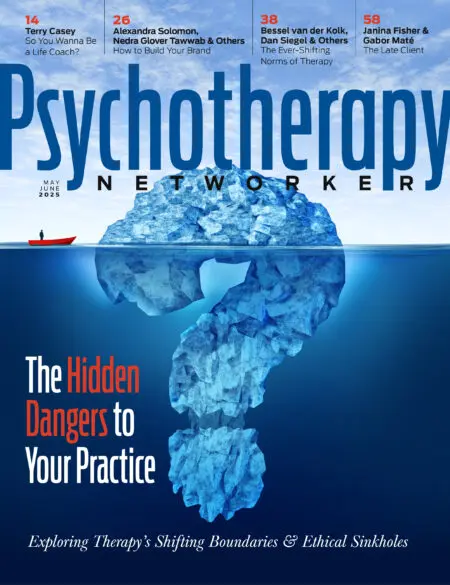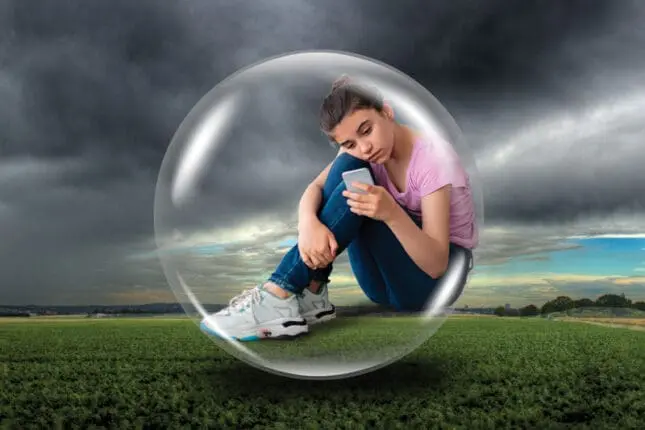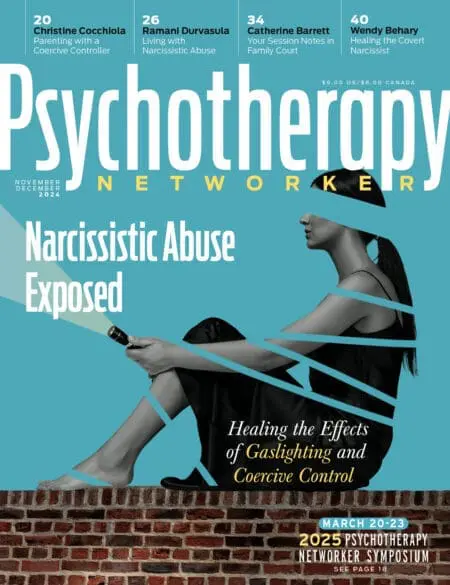In the late 1980s, a grand experiment was launched in the Arizona desert. Biosphere 2 was (and still is) the largest attempt to build a closed artificial ecosystem, as a prelude to (someday) building self-sustaining ecosystems in outer space. Biosphere 2 was designed to support eight people, who would attempt to live within it for several years. All of the oxygen they breathed, the water they drank, and the food they ate was to be generated within the facility.That goal was never reached. The complexity of biological interactions among species and social interactions among humans proved to be too much, but a great deal was learned from the multiple failures. For instance, many of the trees they planted to create a rainforest ecosystem grew rapidly but then fell over before reaching maturity. The designers hadn’t realized that young trees need wind to grow properly. When the wind blows, it bends the tree, which tugs at the roots on the windward side and compresses the wood on the other side. In response, the root system expands to provide a firmer anchor where it’s needed, and the compressed wood cells change their structure to become stronger and firmer.
This altered cell structure is called reaction wood, or sometimes stress wood. Trees that are exposed to strong winds early in life become trees that can withstand even stronger winds when full-grown. Conversely, trees that are raised in a protected greenhouse sometimes fall over from their own weight before they reach maturity.
Stress wood is a perfect metaphor for children, who also need to experience frequent stressors in order to become strong adults. The Biosphere trees illustrate the concept of antifragility, a term coined by my NYU colleague Nassim Taleb in his 2012 book, Antifragile: Things That Gain from Disorder. Taleb noted that some things, like wineglasses, are fragile. We protect fragile things from shocks and threats because we know they can’t withstand even a gentle challenge, such as being knocked over on a dinner table. Other things are resilient, such as a plastic cup, which can withstand being knocked off the table. But resilient objects don’t get better from getting dropped; they merely don’t get worse.
Taleb coined the word antifragile to describe things that actually need to get knocked over now and then in order to become strong. I used the word “things,” but there are very few inanimate objects that are antifragile. Rather, antifragility is a common property of complex systems designed (by evolution, and sometimes by people) to function in a world that’s unpredictable. The ultimate antifragile system is the immune system, which requires early exposure to dirt, parasites, and bacteria in order to set itself up in childhood. Parents who try to raise their children in a bubble of perfect hygiene are harming their children by blocking the development of their antifragile immune systems.
It’s the same dynamic for what has been called the psychological immune system—the ability of a child to handle, process, and get past frustrations, minor accidents, teasing, exclusion, perceived injustices, and normal conflicts without falling prey to hours or days of inner turmoil. There’s no way to live with other humans without conflicts and deprivations. As the Stoics and Buddhists taught long ago, happiness can’t be reached by eliminating all “triggers” from life; rather, happiness comes from learning to deprive external events of the power to trigger negative emotions in you. In fact, the best parenting book that my wife and I read when our children were toddlers urged us to look for opportunities to frustrate our children every day by laying out and enforcing the contingencies of life: If you want to watch Teletubbies, you must first put away your toys. If you persist in doing that, you’ll get a time-out. Yes, your sister got something you didn’t, and that happens sometimes.
Well-intentioned parents who try to raise their children in a bubble of satisfaction, protected from frustration, consequences, and negative emotions, may be harming their children. They may be blocking the development of competence, self-control, frustration tolerance, and emotional self-management. Several studies find that such “coddling” or “helicopter parenting” is correlated with later anxiety disorders, low self-efficacy (which is the inner confidence that one can do what’s needed to reach one’s goals), and difficulty adjusting to college.
Children are intrinsically antifragile, which is why overprotected children are more likely to become adolescents who are stuck in defend mode. In defend mode, they’re likely to learn less, have fewer close friends, be more anxious, and experience more pain from ordinary conversations and conflicts.
The Need for Risky Play
Antifragility is the key to solving many puzzles about human development, such as this one: Why do children add risk to their play? Why is it that once a skill is mastered, such as skateboarding down a gentle slope, a child will move on to a steeper slope, then a staircase, then perhaps the staircase railing? Why would children choose activities that pretty much guarantee they’ll get hurt, multiple times? Play researchers have long known the answer. As the Norwegian researchers Ellen Sandseter and Leif Kennair wrote in 2010, thrilling experiences have antiphobic effects.
As children become more competent, they become increasingly more intrigued by some of the things that had frightened them. They may approach them, look to adults and older kids for guidance, learn to distinguish the dangerous situations from the less dangerous ones, and eventually master their fears. As they do so, their fear turns into thrill and triumph. You can see the transition on a young child’s face as he reaches out to touch a worm under a rock you just lifted up for him on a nature walk. You can see the mix of fear and fascination turning into a shriek of delight and disgust as he pulls his finger away, laughing. He did it! Now he’ll be less afraid the next time he encounters a worm.
Kids are thrill-seekers. They are hungry for thrills, and they must get them if they are to overcome their childhood fears and wire up their brains so that discover mode becomes the default. Children need to swing and then jump off the swing. They need to explore forests and junkyards in search of novelty and adventure. They need to shriek with their friends while watching a horror movie or riding a roller coaster. In the process, they develop a broad set of competencies, including the ability to judge risk for themselves, take appropriate action when faced with risks, and learn that when things go wrong, even if they get hurt, they can usually handle it without calling in an adult.
Sandseter and Kennair define risky play as “thrilling and exciting forms of play that involve a risk of physical injury.” (In a 2023 paper, expanding on their original work, they add that risky play also requires elements of uncertainty.) They note that such play usually takes place outdoors, during free-play time rather than during activities organized by adults. Children choose to do activities that often lead to relatively harmless injuries, particularly bruises and cuts.
You can see children seeking out risks and thrills, together, in many playground photos taken before the 1980s. On the playground spinner, you can get hurt if you’re not careful, but not badly hurt, which means you get direct feedback from your own skillful and unskillful moves. You learn how to handle your body and how to keep yourself and others safe. Researchers who study children at play have concluded that the risk of minor injuries should be a feature, not a bug, in playground design. In the U.K., they are acting on this insight, adding construction materials, hammers, and other tools (which are used with adult supervision). As one enlightened summer camp administrator told me, “We want to see bruises, not scars.”
What parent wants to take any risks with their child? But the harms of eliminating all risky outdoor play are substantial. While writing this, I met with Mariana Brussoni, a play researcher at the University of British Columbia. Brussoni guided me to research showing that the risk of injury per hour of physical play is lower than the risk per hour of playing adult-guided sports, while conferring many more developmental benefits (because the children must make all choices, set and enforce rules, and resolve all disputes). Brussoni is on a campaign to encourage risky outdoor play because in the long run it produces the healthiest children. Our goal in designing the places children play, she says, should be to “keep them as safe as necessary, not as safe as possible.”
The play researchers help us see that antifragile children need play that involves some risk to develop competence and overcome their childhood anxieties. Only the kids themselves can calibrate the level of risk they are ready for at each moment as they tune up their experience-expectant brains. Like young trees exposed to wind, children who are routinely exposed to small risks grow up to become adults who can handle much larger risks without panicking. Conversely, children who are raised in a protected greenhouse sometimes become incapacitated by anxiety before they reach maturity.
I’m often asked why I urge parents to be more vigilant and restrictive about their children’s online activities when I’ve been talking for years about how parents need to stop oversupervising their children and start giving them independence. Can’t children just as well become antifragile online? Don’t they experience setbacks, stressors, and challenges there?
I see few indications that a phone-based childhood develops antifragility. Human childhood evolved in the real world, and children’s minds are “expecting” the challenges of the real world, which is embodied, synchronous, and one-to-one or one-to-several, within communities that endure. For physical development, they need physical play and physical risk-taking. Virtual battles in a video game confer little or no physical benefit. For social development, they need to learn the art of friendship, which is embodied; friends do things together, and as children they touch, hug, and wrestle. Mistakes are low-cost, and can be rectified in real time. Moreover, there are clear embodied signals of this rectification, such as an apology with an appropriate facial expression. A smile, a pat on the back, or a handshake shows everyone that it’s okay, both parties are ready to move on and continue playing, both are developing their skills of relationship repair.
In contrast, as young people move their social relationships online, those relationships become disembodied, asynchronous, and sometimes disposable. Even small mistakes can bring heavy costs in a viral world where content can live forever and everyone can see it. Mistakes can be met with intense criticism by multiple individuals with whom one has no underlying bond. Apologies are often mocked, and any signal of re-acceptance can be mixed or vague. Instead of gaining an experience of social mastery, a child is often left with a sense of social incompetence, loss of status, and anxiety about future social interactions.
This is why there’s no contradiction when I say that parents should supervise less in the real world but more in the virtual—primarily by delaying immersion. Children did not evolve to handle the virality, anonymity, instability, and potential for large-scale public shaming of the virtual world. Even adults have trouble with it.
We are misallocating our protective efforts. We should be giving children more of the practice they need in the real world and delaying their entry into the online world, where the benefits are fewer and the guardrails nearly nonexistent. 
PHOTO © PROSTOCK-STUDIO/FRANK WAGNER
Jonathan Haidt
Jonathan Haidt, PhD, is the Thomas Cooley Professor of Ethical Leadership at New York University’s Stern School of Business. He is the author of two books: The Happiness Hypothesis: Finding Modern Truth in Ancient Wisdom (2006) and The Righteous Mind: Why Good People are Divided by Politics and Religion (2012), which became a New York Times bestseller.













